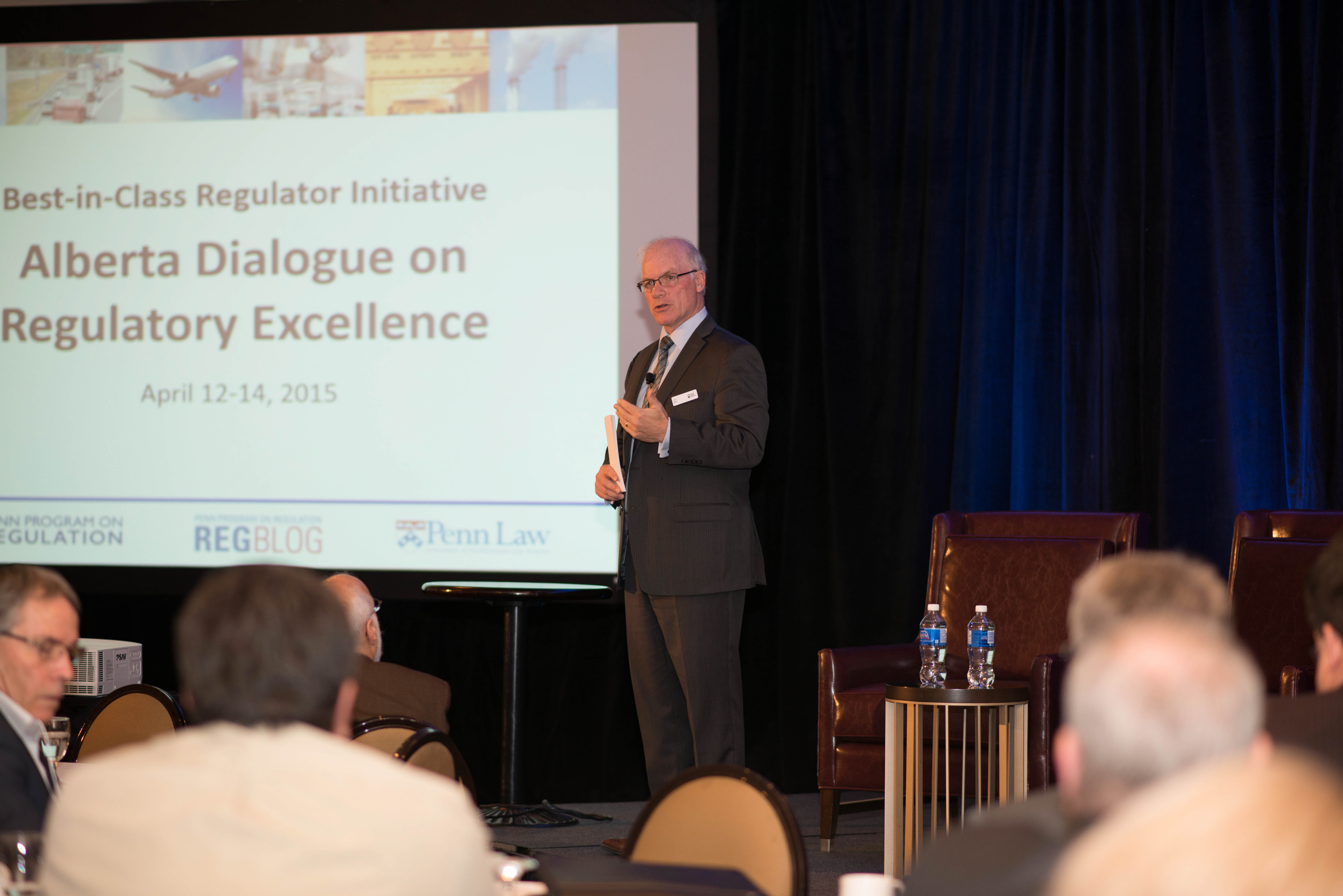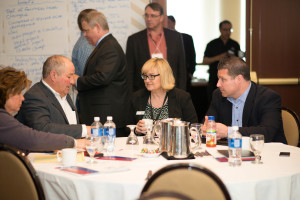
The Penn Program on Regulation asks stakeholders what they think makes for an excellent regulator.
How would you define an excellent regulatory authority? Would you focus on the regulator’s outputs, such as how many regulations it completes or enforcement actions it takes? Or would you focus instead on its outcomes, such as how effective those regulations and enforcement actions prove to be? Or would you focus on inputs and the process by which the regulator makes decisions and creates regulations?
All of these approaches have merit. But based on two dialogue sessions organized this spring in Alberta, Canada by the Penn Program on Regulation (PPR), it appears that many stakeholders of the Alberta Energy Regulator (AER) favor an input-based answer to the question of regulatory excellence. These stakeholders repeatedly emphasized that how the regulator interacts with the public during the process of making regulatory decisions is the defining feature of a “best-in-class” regulator.
PPR’s dialogue sessions were part of a larger project sponsored by the AER to identify what makes an excellent regulator and how the AER can apply and measure those characteristics. One session brought together representatives from Aboriginal communities across Alberta, while another larger dialogue included landowners, municipal officials, industry representatives, environmentalists, and Aboriginal community members from throughout the province.
Although responses varied and different categories of “best-in-class” characteristics emerged, across the board stakeholders consistently stressed that the way in which the regulator engages with the public is a crucial component of regulatory excellence.
For example, during the second dialogue, PPR researchers found that stakeholders’ ideas about a “best-in-class” regulator seemed to “coalesce around a set of six core” areas: “(i) institutional characteristics; (ii) regulatory decisions; (iii) transparency; (iv) public engagement; (v) enforcement; and (vi) evaluation.” Although transparency and public engagement were broken out into their own categories in a summary report PPR team members prepared following the dialogue, they actually overlap. More significantly, both transparency and public engagement factored into stakeholders’ comments in each of the other six core areas of excellence.
For example, the report’s section on institutional characteristics reveals how stakeholders identified that an excellent regulator’s institutional culture should exhibit “a clear set of values, adopted following a public input process,” and that it should also reflect “a pattern of earnest collaboration with members of the public.” Stakeholders also emphasized transparency, keeping lines of communication open with the public, and including a diverse and balanced set of representatives in regulatory processes.
 Stakeholders at both dialogues noted that, when making decisions, a regulator should engage members of the public early on in the process and then again on a continuing basis as decisions are made. The regulator should ensure that the public’s comments are included in the ultimate decision so that the public feels it has been heard.
Stakeholders at both dialogues noted that, when making decisions, a regulator should engage members of the public early on in the process and then again on a continuing basis as decisions are made. The regulator should ensure that the public’s comments are included in the ultimate decision so that the public feels it has been heard.
Equally important, a “best-in-class” regulator will also explain why it has made certain decisions, giving reasons and responding in more than formulaic fashion to concerns raised during the process.
According to stakeholders at the dialogues, all of a regulator’s procedures and regulations should be “accessible, readable, and understandable by all those impacted.” The regulator should also have offices physically located near different parts of community, with staff working in the field not only to inspect regulated facilities but also to engage with the public.
Stakeholders said they wanted to be kept apprised of ongoing decision-making and regulatory developments, even if the news might be bad for their interests. An excellent regulator, they said, will also keep the public informed of enforcement actions and involve the public in setting goals and evaluating how well those goals have been met.
Stakeholders at both dialogues mentioned the importance of a regulator treating members of the public fairly and with respect. These considerations seemed particularly important to representatives from various Aboriginal communities. These communities’ representatives believed that an excellent regulator would ensure that all stakeholders have the resources to participate in the regulatory process. They stressed that an excellent regulator will be sympathetic to and understanding of Aboriginal customs, cultures, and methods of communication. Some dialogue participants suggested that traditional Aboriginal knowledge about nature could bring important insights to a regulator’s assessment of changing environmental conditions.
According to stakeholders, an excellent regulator seeks to build trust with all segments of the public. Aboriginal representatives made a particular point to emphasize the importance of relationship-building. They thought that an excellent regulator would include Aboriginal perspectives in all of its decisions and ensure these communities’ concerns are heard. Some dialogue participants stated that an excellent regulator should have at least one designated Aboriginal representative on its board, in addition to an adequate number of culturally sensitive staff members who are dedicated to reaching out to Aboriginal communities.
All different types of stakeholders from throughout Alberta seemed to agree that an excellent regulator will actively seek out public input when making decisions. An excellent regulator will realize, for example, that email is not always a sufficient means of communication for many members of Aboriginal communities and for residents in more rural or remote locations.
Ultimately the process of making regulatory decisions is what makes a regulator “best-in-class.”

Panel discussion at PPR-organized dialogue held in Calgary, moderated by Prof. Cary Coglianese
This essay is the fourth in a four-part series on “The Search for Regulatory Excellence.”



